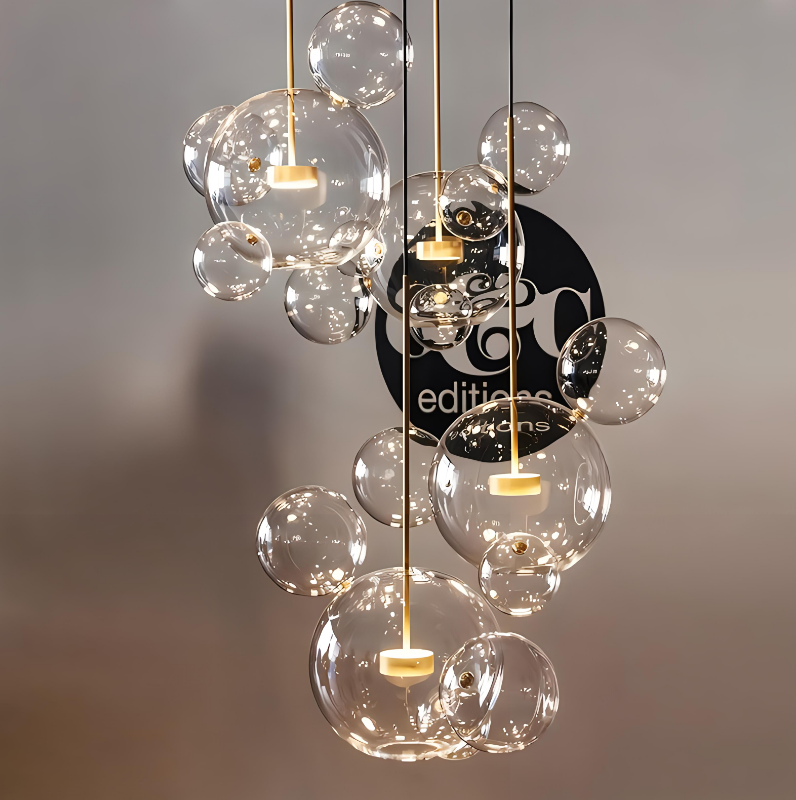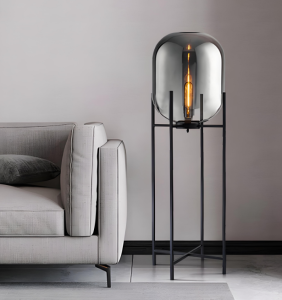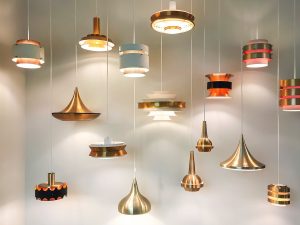
Shining a Light on Style: Elevate Your Space with Pendant Lighting
Pendant lighting is a type of lighting fixture that hangs from the ceiling by a cord, chain, or metal rod. It is a versatile and stylish lighting solution that can be used in various spaces to enhance both functionality and aesthetics. Pendant lighting has a long history, dating back to ancient times when it was used in religious ceremonies and as a source of light in homes. Today, pendant lighting is popular in both residential and commercial settings due to its ability to provide focused task lighting or ambient illumination.
Key Takeaways
- Pendant lighting is a versatile and stylish lighting solution that can elevate any space.
- The benefits of pendant lighting include both functionality and aesthetics, making it a popular choice for many homeowners.
- When choosing pendant lighting, factors such as size, style, and placement should be considered.
- There are various types of pendant lighting available, from classic to contemporary designs.
- Pendant lighting can be used in different rooms to create the perfect ambience and maximize space and light.
The Benefits of Pendant Lighting: Functionality and Aesthetics Combined
One of the main benefits of pendant lighting is its ability to enhance the functionality of a space. Pendant lights can be used to provide task lighting in areas such as kitchen islands, dining tables, or workspaces. By hanging pendant lights directly above these areas, you can ensure that the light is focused where it is needed most, making tasks easier and more efficient.
In addition to its functional benefits, pendant lighting also has the ability to improve the aesthetics of a space. With a wide range of styles, designs, and materials available, pendant lights can be used to add a touch of elegance or create a focal point in any room. Whether you prefer a classic chandelier-style pendant or a modern geometric design, there is a pendant light that can complement your existing decor and enhance the overall look and feel of your space.
Examples of spaces that benefit from pendant lighting include kitchens, dining rooms, living rooms, bedrooms, and even bathrooms. In the kitchen, pendant lights can be used to illuminate the countertop or kitchen island, making food preparation and cooking tasks easier. In the dining room, a pendant light can be hung above the table to create a warm and inviting atmosphere for meals. In the living room, pendant lights can be used to highlight artwork or provide ambient lighting. In the bedroom, pendant lights can be used as bedside reading lights or to create a soft and relaxing ambiance. In the bathroom, pendant lights can be used to provide task lighting at the vanity or as decorative accents.
Choosing the Right Pendant Lighting: Factors to Consider
When choosing pendant lighting ckensu for your space, there are several factors to consider to ensure that you select the right fixture. These factors include the size and scale of the pendant light, the height and placement of the pendant light, the style and design of the pendant light, and the material and finish of the pendant light.
The size and scale of the pendant light is an important consideration as it should be proportionate to the size of the room and other elements in the space. A small pendant light may get lost in a large room, while a large pendant light may overwhelm a small space. It is important to measure the height, width, and depth of the space where you plan to hang the pendant light to ensure that it will fit properly.
The height and placement of the pendant light is also crucial for both functionality and aesthetics. The height at which you hang the pendant light will depend on the purpose of the light and the height of the ceiling. For example, if you are using a pendant light as task lighting above a kitchen island, it should be hung at a height that allows for comfortable visibility without obstructing your view. On the other hand, if you are using a pendant light as a decorative accent in a living room, it can be hung lower to create a more intimate atmosphere.
The style and design of the pendant light should complement your existing decor and personal taste. Whether you prefer a traditional, transitional, or contemporary style, there are pendant lights available in various designs, shapes, and colors to suit your preferences. Consider the overall theme and color scheme of your space when selecting a pendant light to ensure that it will blend seamlessly with the rest of your decor.
The material and finish of the pendant light can also make a significant impact on the overall look and feel of your space. Pendant lights are available in a wide range of materials, including glass, metal, wood, and fabric. Each material has its own unique characteristics and can create a different ambiance in the room. The finish of the pendant light, such as polished chrome, brushed nickel, or antique brass, can also add a touch of sophistication or vintage charm to your space.
Types of Pendant Lighting: From Classic to Contemporary
| Type of Pendant Lighting | Description | Materials | Price Range |
|---|---|---|---|
| Classic Pendant Lighting | Timeless designs that never go out of style | Brass, Glass, Crystal | 50-500 |
| Industrial Pendant Lighting | Raw and edgy designs inspired by factories and warehouses | Steel, Iron, Concrete | 30-300 |
| Modern Pendant Lighting | Clean lines and minimalist designs that fit any contemporary space | Aluminum, Glass, Plastic | 50-500 |
| Tiffany Pendant Lighting | Stained glass designs that add a touch of elegance and color to any room | Glass, Bronze | 100-1000 |
| Cage Pendant Lighting | Geometric designs that add a modern and playful touch to any space | Steel, Iron, Copper | 50-500 |
Pendant lighting comes in a variety of styles, ranging from classic to contemporary. Each style has its own unique characteristics and can be used to create different moods and atmospheres in a space.
Classic pendant lighting styles are timeless and elegant. They often feature intricate details, such as crystal accents or ornate metalwork, and are commonly used in formal dining rooms or traditional living spaces. Classic pendant lights can add a touch of sophistication and glamour to any room.
Modern pendant lighting styles are sleek and minimalist. They often feature clean lines and simple shapes, such as geometric or cylindrical designs. Modern pendant lights are popular in contemporary homes and can create a sleek and stylish look in any room.
Contemporary pendant lighting styles combine elements of both classic and modern design. They often feature unique shapes or materials that add a modern twist to a traditional style. Contemporary pendant lights are versatile and can be used in a variety of spaces to create a fresh and eclectic look.
Unique pendant lighting styles are for those who want to make a statement with their lighting fixtures. These pendant lights often feature unconventional shapes or materials, such as recycled glass or reclaimed wood. Unique pendant lights can be used as focal points in a room or as conversation starters.
Pendant Lighting for Different Rooms: Creating the Perfect Ambience
Pendant lighting can be used in various rooms to create the perfect ambience. Whether you want to create a warm and inviting atmosphere in the living room or a bright and functional space in the kitchen, pendant lights can help you achieve your desired effect.
In the living room, pendant lights can be used to create a cozy and intimate atmosphere. Hang a cluster of pendant lights at different heights above the seating area to create a focal point and provide ambient lighting. Choose warm-toned bulbs to create a soft and inviting glow.
In the dining room, pendant lights can be used to create a dramatic and elegant atmosphere. Hang a single large pendant light above the dining table to create a statement piece. Choose a pendant light with a dimmer switch so that you can adjust the brightness according to the occasion.
In the kitchen, pendant lights can be used to provide task lighting above the countertop or kitchen island. Hang pendant lights at a height that allows for comfortable visibility without obstructing your view. Choose pendant lights with adjustable arms or swivel heads so that you can direct the light where it is needed most.
In the bedroom, pendant lights can be used as bedside reading lights or as decorative accents. Hang pendant lights on either side of the bed at a height that allows for comfortable reading. Choose pendant lights with adjustable brightness levels so that you can create a relaxing ambiance.
In the bathroom, pendant lights can be used to provide task lighting at the vanity or as decorative accents. Hang pendant lights at eye level to ensure that they provide adequate lighting for grooming tasks. Choose pendant lights with frosted or opal glass shades to create a soft and diffused light.
Pendant Lighting for Small Spaces: Maximizing Space and Light

Pendant lighting is an excellent choice for small spaces as it can help maximize both space and light. By hanging pendant lights from the ceiling, you can free up valuable floor space and make the room feel larger and more open.
One way that pendant lighting can make a small space feel larger is by drawing the eye upward. By hanging pendant lights at different heights, you can create a sense of depth and dimension in the room. This can make the ceiling appear higher and the space feel more expansive.
Another way that pendant lighting can maximize space in a small room is by providing focused task lighting. By hanging pendant lights directly above areas where tasks are performed, such as a desk or kitchen island, you can ensure that the light is directed where it is needed most. This can help create a functional and efficient workspace without taking up valuable surface area.
When choosing pendant lighting for a small space, it is important to consider the size and scale of the fixture. A large pendant light may overwhelm a small room, while a small pendant light may get lost in a larger space. Measure the height, width, and depth of the room to ensure that the pendant light will fit properly and not overpower the space.
Examples of small spaces that benefit from pendant lighting include studio apartments, small kitchens, and compact home offices. In a studio apartment, pendant lights can be used to define different areas of the space, such as the living area and sleeping area. In a small kitchen, pendant lights can be used to provide task lighting above the countertop or kitchen island without taking up valuable counter space. In a compact home office, pendant lights can be used to provide focused task lighting above the desk without cluttering the workspace.
DIY Pendant Lighting: Customizing Your Lighting Fixtures
If you are feeling creative and want to add a personal touch to your lighting fixtures, you can try making your own pendant lighting. DIY pendant lighting allows you to customize your fixtures to suit your personal style and preferences.
To make your own pendant lighting, you will need a few basic materials and tools. The materials you will need include a pendant light kit, which typically includes a socket, cord, and canopy; a light bulb; and a shade or decorative element to hang from the pendant light. The tools you will need include wire cutters, pliers, and a screwdriver.
To start, assemble the pendant light kit according to the manufacturer’s instructions. This typically involves attaching the socket to the cord and securing it to the canopy. Next, choose a shade or decorative element to hang from the pendant light. This can be anything from a glass globe to a fabric drum shade. Attach the shade or decorative element to the pendant light kit using the provided hardware.
Once you have assembled your DIY pendant light, you can hang it in your desired location. Make sure to follow the manufacturer’s instructions for installation and safety guidelines. If you are unsure about electrical wiring or installation, it is recommended to consult a professional electrician.
Examples of DIY pendant lighting projects include repurposing old objects into pendant lights, such as mason jars or wine bottles. You can also create your own shades using materials such as fabric, paper, or metal. The possibilities are endless when it comes to DIY pendant lighting, allowing you to create unique and personalized fixtures for your space.
Pendant Lighting Trends: Keeping Up with Modern Design
Like any other design element, pendant lighting trends come and go. It is important to stay up-to-date with current trends if you want to incorporate pendant lighting into your space in a modern and stylish way.
One current pendant lighting trend is the use of oversized fixtures. Large pendant lights can make a bold statement in a room and create a focal point. They are often used in open-concept spaces or rooms with high ceilings to add drama and visual interest.
Another current pendant lighting trend is the use of mixed materials. Pendant lights that combine different materials, such as metal and wood or glass and concrete, can create a unique and eclectic look. This trend allows you to mix and match different textures and finishes to create a custom lighting fixture.
Geometric pendant lights are also a popular trend in modern design. These pendant lights feature clean lines and geometric shapes, such as triangles, squares, or hexagons. They can add a contemporary and minimalist touch to any room.
Industrial-style pendant lights continue to be a popular trend in modern design. These pendant lights often feature exposed bulbs, metal shades, and vintage-inspired finishes. They can add a rustic and industrial charm to any space.
To incorporate pendant lighting trends into your space, consider the overall style and theme of your room. Choose pendant lights that complement your existing decor and add a modern touch. Mix and match different styles, materials, and finishes to create a unique and personalized look.
Examples of spaces that showcase pendant lighting trends include modern kitchens with oversized pendant lights above the island, industrial-inspired living rooms with geometric pendant lights as focal points, and eclectic dining rooms with mixed-material pendant lights above the table.
Maintenance and Care of Pendant Lighting: Tips and Tricks
To ensure that your pendant lighting fixtures stay in good condition and continue to provide optimal lighting, it is important to properly maintain and care for them. Here are some tips and tricks for maintaining and caring for your pendant lighting fixtures:
1. Clean the fixtures regularly: Dust and dirt can accumulate on the surface of pendant lighting fixtures over time, affecting their appearance and performance. Use a soft cloth or duster to gently wipe away any dust or dirt from the surface of the fixtures. Avoid using abrasive cleaners or harsh chemicals that can damage the finish or material of the fixtures.
2. Replace light bulbs as needed: Over time, light bulbs in pendant lighting fixtures may burn out or become dim. It is important to replace them promptly to ensure that the fixtures continue to provide optimal lighting. Follow the manufacturer’s instructions for replacing light bulbs in your specific pendant lighting fixtures.
3. Check the wiring and connections: Periodically check the wiring and connections of your pendant lighting fixtures to ensure that they are secure and in good condition. Loose or damaged wiring can be a safety hazard and should be addressed immediately. If you are unsure about electrical wiring or connections, it is recommended to consult a professional electrician.
4. Avoid excessive heat exposure: Some pendant lighting fixtures, especially those with fabric shades or delicate materials, may be sensitive to excessive heat exposure. Avoid placing the fixtures near heat sources, such as stoves or fireplaces, to prevent damage or discoloration.
5. Protect the fixtures during renovations: If you are planning any renovations or construction work in the area where your pendant lighting fixtures are installed, it is important to protect them from dust, debris, and potential damage. Cover the fixtures with plastic or cloth during the renovation process to keep them clean and safe.
By following these tips and tricks, you can ensure that your pendant lighting fixtures stay in good condition and continue to provide optimal lighting for years to come.
Elevating Your Space with Pendant Lighting
In conclusion, pendant lighting is a versatile and stylish lighting solution that can enhance both functionality and aesthetics in any space. Whether you want to create a warm and inviting atmosphere in the living room or a bright and functional space in the kitchen, pendant lights can help you achieve your desired effect.
When choosing pendant lighting for your space, consider factors such as size, height, style, and material to ensure that you select the right fixture. Pendant lighting comes in a variety of styles, ranging from classic to contemporary, allowing you to find a fixture that complements the overall aesthetic of your space. Additionally, consider the size and height of the pendant light to ensure it is proportionate to the room and does not overwhelm or underwhelm the space. The material of the pendant light is also important to consider, as it can affect the overall look and feel of the fixture. For example, a glass pendant light can create a more modern and sleek look, while a metal pendant light can add an industrial or rustic touch. Ultimately, choosing pendant lighting that aligns with your personal style and meets the practical needs of your space will help create a cohesive and visually appealing design.


